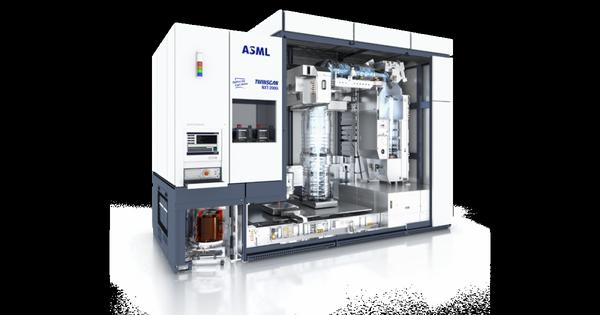The machines on which the so-called AMD Radeon graphics cards or Ryzen processors are built, NVIDIA graphics chips, Exynos or Qualcomm phone processors are manufactured by ASML, the world's largest manufacturer, based in the Netherlands.
A microchip, also known as a chip, computer chip, or integrated circuit, is a set of electronic circuits mounted on a flat strip of silicon. The set of circuits is called transistors that act like miniature switches, activating or deactivating the current flow. Silicon is chosen in the chip industry because it is a "semiconductor" metal, which means that by combining with other materials (phosphorus or boron), the conductive properties of silicon will increase considerably. This provides the perfect setting for the efficient passage of electricity.
A microchip contains billions of transistors, and its size can be compared to the proportions of a human body nail. The characteristics of the microchip are measured in nanometers. A nanometer is one billionth of a meter, an extremely small unit of measurement.
The manufacturing process of the microchips comprises hundreds of stages and can take up to 4 months only to design it until the actual production. Thus, chip makers undertake preliminary steps, calibration of air quality and temperature in the spaces intended for the construction of chips. The latest chips can contain up to 100 layers of silicon superimposed and aligned down to the smallest detail. The spaces specially designed for the creation of microchips are very well sanitized (ISO class 1), which means that there are very few particles whose dimensions can be observed only in the best performing microscopes. The process by which chips are made is called lithography or photolithography.
Lithography is a projection system, through which light is transposed through a plane of the model on a photosensitive silicon plate, after which the model will be printed. Specific to the lithography process is the model fidelity control (PFC) which aims to analyze the entire chip development and manufacturing process, providing essential data for manufacturers. Therefore, power algorithms are present in this process, translating and implementing the obtained data to prevent further errors or defects of the finished product, generating high yields in the designs even for the most complex chips. ASML programmers have developed an Artificial Intelligence algorithm that improves the quality of lithographed chips in real time and was first used in the production of AMD Ryzen processors, thus increasing machine efficiency and the number of valid chips at the end of a production cycle.

When it comes to chips, they fall into two types: "logic chips" and "memory chips".
In the first wave of the COVID-19 pandemic last year, people in lockdown, working from home, realized that they needed a better computer (PC, Laptop, console) for work or gaming. They bought numerous assembled computers or individual components, as well as video consoles, generating an expanding demand on a declining production trend (factories closed in Asia due to pandemic measures).
For the car industry, the regulations of the authorities last year reduced the production of the companies, but the sales of cars did not destabilize, contrary to the expectations of the economic analysts. In 2021, more and more devices and machines are based on one or more chips. Thus, many car companies integrate chips into cars to become semi-autonomous or fully autonomous, as they are a serious competitor to the chip and semiconductor market.
Chip manufacturers are facing difficult times in the segment of timely delivery of thermal conductors to their customers in various production areas, even one year after the beginning of the pandemic. ASML has a monopoly on lithography technology that makes it easy to make the smallest, most powerful, and most advanced chips available today. The current context has put the entire planet in trouble, and the upgrading of existing ASML machines with new technology and the production of other machines have also been hampered.
To try to alleviate the current crisis, ASML will deliver its own processors to top customers, with ASML expecting total sales of $ 5.8 billion 30% higher this year than last year. .
The chip crisis of any kind is reflected in the stocks of IT stores, but also in the case of car manufacturers or other industries. A strong example of the pandemic and extremely high demand is that of graphics cards or consoles (Playstation and Xbox). Forced to spend more time at home, people turned to gaming and socializing through gaming, and graphics cards disappeared from stores.
